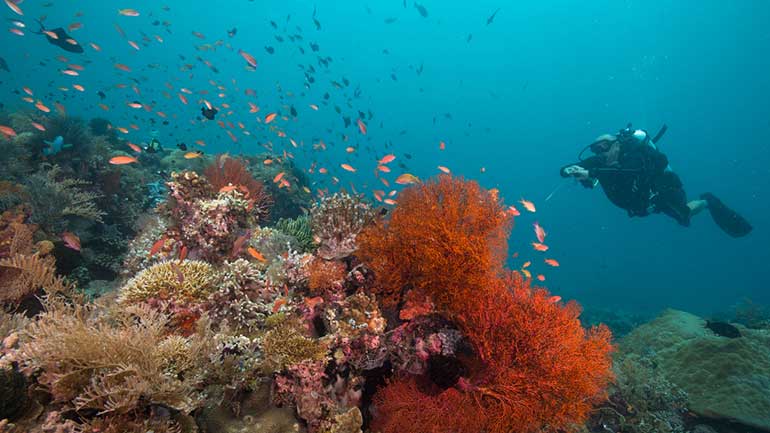
Have you noticed that the standard dive advertising, always has beautiful people with perfect bodies. They are 20 something, without an inch of fat on those toned, washboard tummies. The simple truth, is we are not all made that way. There are some people, that can learn to dive, and instantly succeed in staying down for 60 minutes. I was not one of them....
My first dives were between 30-35 minutes, and this continued for many years. The problem being, that when you only get to dive 1-2 weeks a year, it’s hard to improve. What you learn in that time, is countered by the year gap until your next underwater adventure. Also, I wasn’t twenty something, and I certainly didn’t have a washboard tummy!
This was enhanced, by no one actually telling me the secrets. You will see countless posts on breathing techniques, so I won’t bore you with them. These are simple guidelines to getting a longer dive.

It is so important to be relaxed. As a diver, you want to use as little energy as possible. This obviously increases with more experience. It does help if you are comfortable in the water. Buying your own equipment assists in that. Every dive feels the same. You don’t have to get familiar with a new set up. The same dive buddy or diving with a divemaster you trust, all helps to relieve stress.
When you learn to dive, you are taught the flutter kick. It’s standard, and easy to do. However, it does utilise the biggest muscle groups in the body. The quads, hamstrings and buttocks. These muscles need a lot of oxygen to perform. In turn making you heavier on air. You never see a professional divemaster, or instructor using this kick. We use the frog kick. This uses the smaller muscles on the side of your legs, and calves. Smaller muscle group.... less oxygen needed.
Obviously the deeper you go, the more air you use. But you can help in other ways. Try and anticipate what your divemaster is trying to show you. Be in a position to respond without major movement. It really helps to be behind your divemaster by a few metres, that way you only have to make minor adjustments in position to see what they are trying to show you.
Use the topography to assist you. Look at the terrain a head. If you are swimming against the current, look for obstructions a head. Try and get in their slipstream. The closer you are to the reef, or bottom, the less the current. Now I’m not saying you should endanger the reefs and corals. But as your experience improves, the closer you can get, the less energy you use.
Now don’t attempt all this at once. Don’t expect to turn your dive times around overnight. But do practice. I recommend ten minutes a dive. Then enjoy the rest of your time. Recreational diving is about enjoyment , we do it for fun. However it is healthy to try to continually improve. This leads to more relaxed dives, which leads to longer dives.
Happy Bubbles
Divemaster Simon (bigger than your average divemaster!)



Lloydy your a legend
Definitely a MASTER at gliding one through the water. The best.